Not everyone likes that “synthetic” text replaces “human” text on the web. Google’s policy updates are one of such manifestations.
In today’s article, we will consider the following points:
- what elements of content can be generated by artificial intelligence
- the advantages and disadvantages of this approach
- how to use AI to avoid negative reactions from search engines and maintain your ranking
- a review of AI-based tools
This material is certainly not “The Four Seasons” by Vivaldi, but I guess which of these four concertos is the most interesting to you 🙂
Before moving on to the third part, I suggest a practical-philosophical prelude. So, let’s get started.
Welcome to the Future
Finally, the beautiful era of artificial intelligence began, where the unique author’s writing style came to the forefront. The reason is simple – everything else artificial intelligence can do by itself. It can write text “without fluff,” analyze data, and present the results from any angle.
But it cannot add that special ingredient that brings the material to life with real emotions capable of capturing the attention of even the most demanding readers. And the more the internet fills with AI-generated articles, the more valuable the distinctive writing style of every high-class author will become.
I would compare this to making coffee. As you can see, coffee machines do not leave baristas without work. On the contrary, today, a person who professionally makes coffee is surrounded by a certain charm and charisma. People pay more attention to them, and the customers now perceive the process as a mini-show.
The same is what I expect to see soon in writing. If, for an ordinary person in the late 2010s, the idea of generating content using artificial intelligence seemed futuristic, now it is commonplace. You cannot surprise anyone with AI-generated texts or images.
Thus, the era of the future, which we have heard so much about in films and science fiction books, has come unnoticed. And with it came unprecedented problems.
In the SEO community, there are heated debates on avoiding sanctions from Google for using artificial intelligence. Many sites across the world have already felt the sting of this giant.
Of course, some sites have temporarily avoided this fate. But the key word here is “temporarily.” Such “luck” does not mean that it will not happen to them unexpectedly.
So, the atmosphere in the SEO space is tense and electrified. You can cut it with a knife.
Now, at the unique crossroad, there is a choice about “how to use artificial intelligence.” The chosen path depends on the individual’s mindset.
On the one hand, artificial intelligence frees the hands of those specialists who understand that it is not a magic pill that can solve all their tasks with a few clicks.
On the other hand, AI can become the Achilles’ heel for those who dream of entrusting all their mental processes to a machine. This path risks leading to complete degradation.
Thinking for oneself is now just as necessary as before. AI saves people time when performing monotonous operations, such as collecting and analyzing various data.
All creative tasks, I advise, should be perceived as a special zest. They need to be savored by one’s intellect so that a robot in the guise of Arnold doesn’t come and take your job.

I consider content writing a creative process that requires inspiration. The dry and monotonous text quickly lulls the reader to sleep. Such a phenomenon has its advantages. In this way, you will increase your site audience engagement rate in search engines eyes. While the reader is asleep, Google will count the time they spend on the resource 🙂
If talking seriously, uninteresting content will be closed at the speed of light. But is it possible to create great material using AI and not fall out of favor with search engines? Let’s analyze this question in detail.
What Elements of Content Can AI Generate for Blogs
First, let’s touch on basic concepts. Namely, what can artificial intelligence develop? In short, it is almost everything that a team consisting of a copywriter, designer, SEO specialist, and marketer can do.
And you, being at the interface of an AI-based tool, automatically turn into the manager of this department. If you have experience writing quality articles, you will quickly notice that all your subordinates are at the Strong Junior or Pre-Middle level.
Since each content element creation has nuances that require your corrections, you can release tons of content daily. However, the question of its quality remains open.
Images
As of the publication **** of this article, I have yet to see AI consistently and without grammatical errors generate images with text. If this did happen, it was extremely rare, and the phrase consisted of only a few words. So, beautiful infographics are still beyond AI’s capabilities.
Additionally, such tools often can’t count correctly. For example, I command it to draw five robots. As a result, it gave me an image of six ones. After pointing out the mistake and asking again for five robots, I get seven well-drawn machines.
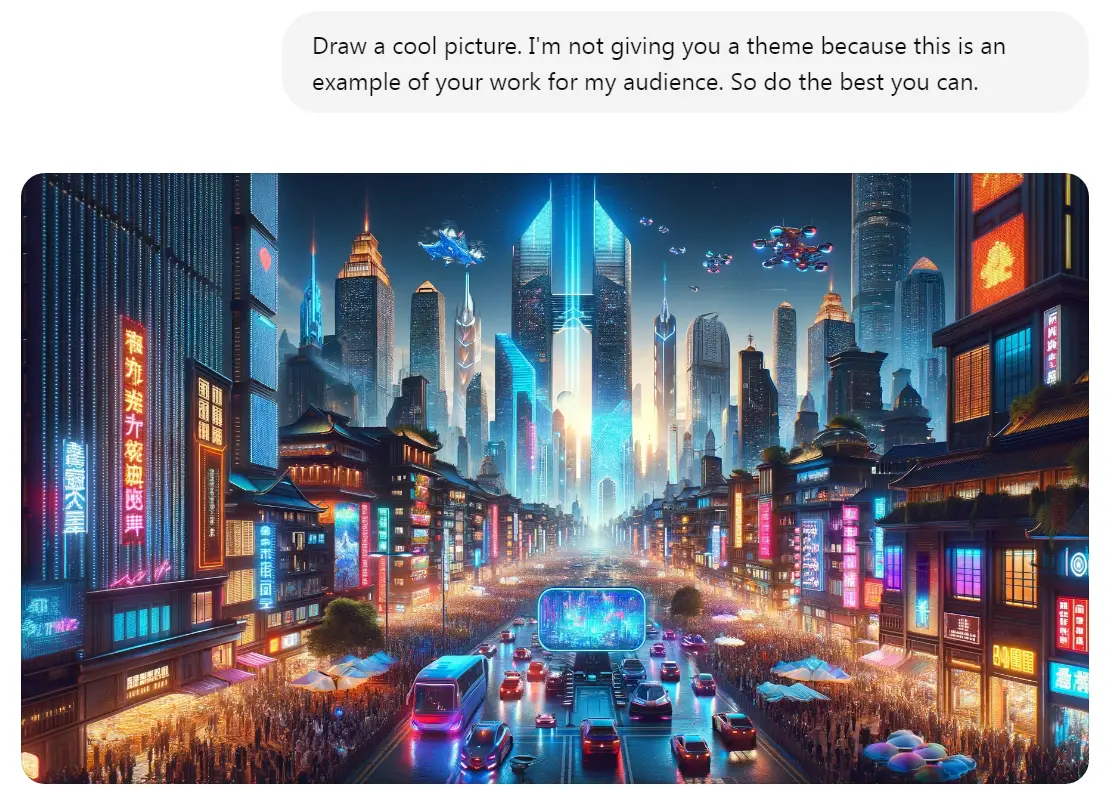
Regarding strengths, artificial intelligence draws abstractions perfectly. It also distinguishes styles well, allowing you to create, for instance, images in cyberpunk style and those resembling an artist’s gouache painting.
Visible Text
By “visible text,” I mean headings, subheadings, section texts, etc., everything we can see when viewing the published material.

If you review AI-generated content for the first time, it will look quite high-quality. But the more such text you read, the more frequent repetitive techniques will stand out. It concerns the regular repetition of certain words and the general text structure.
Invisible Text
By this, I mean the text that the viewer does not see. Because no one but the content authors knows about competitor materials analytics and other relevant reports. However, this plays a vital role in the development stage.
In this article, I will describe these tasks and data types more precisely when we touch upon AI usage recommendations.
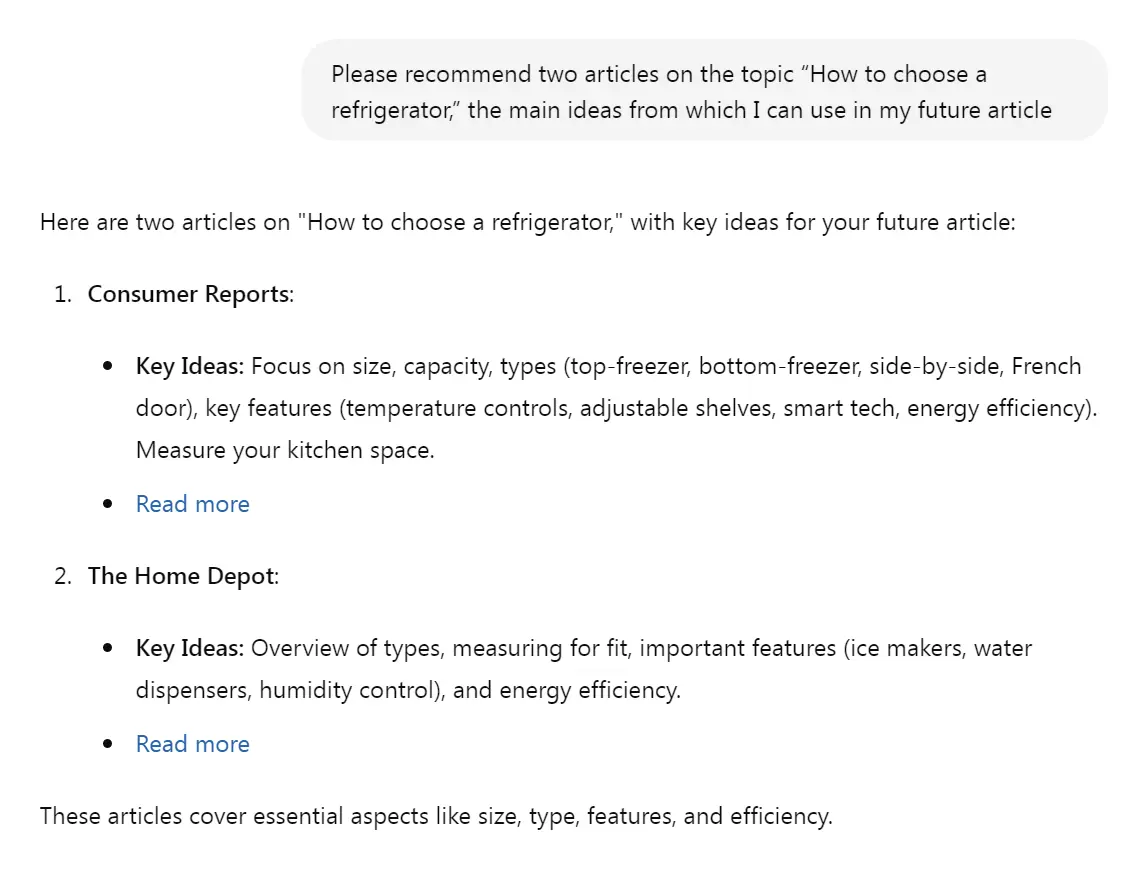
I don’t have complaints about the work quality in this section. Now, let’s consider how relevant AI is to content development.
Should You Use AI in Content Creation
Let’s return to my statement about the crossroads of two paths. Oleg Salamaha, founder of Serpstat, recently spoke at the NaZahid 25 conference. There, he and other well-known SEO experts discussed interesting AI usage cases.
Most speakers mentioned how many sites experienced traffic drops after Google’s spring update, all because of the stricter policy on AI-generated text.
One speaker showed the analytics of a site filled entirely with generated articles. The metrics plummeted suddenly, and the rest of the attendees confirmed knowing similar sites. They unanimously agreed that the first AI usage path is much safer and more qualitative.
Regarding the second path, people in my circle also chose it as well. One of my marketer acquaintances boasted on LinkedIn that he consults two outsourcing companies, which started using entirely generated content based on his recommendations. They only add keywords to the text.
He wrote that from May to December 2023, over 80+ such articles were published on these two sites. He openly shared that monthly expenses were $3900, of which $3500 went to link building and the remaining $400 to the content generation tool.
Then, there were colorful numbers about the search engine positions these articles occupied, and the monthly traffic increased on these sites by 3-4 times. But the main point was that of the 80+ publications, the majority of traffic (80-90%) came from three articles. And this pattern was on both resources.
Finally, as a significant achievement, he mentioned that one company secured a $200,000 contract. After reading the above information, I had a few questions:
1.What happened to the other company he tactfully kept silent about? Did it not get clients but spend all resources admiring high positions in the search results?
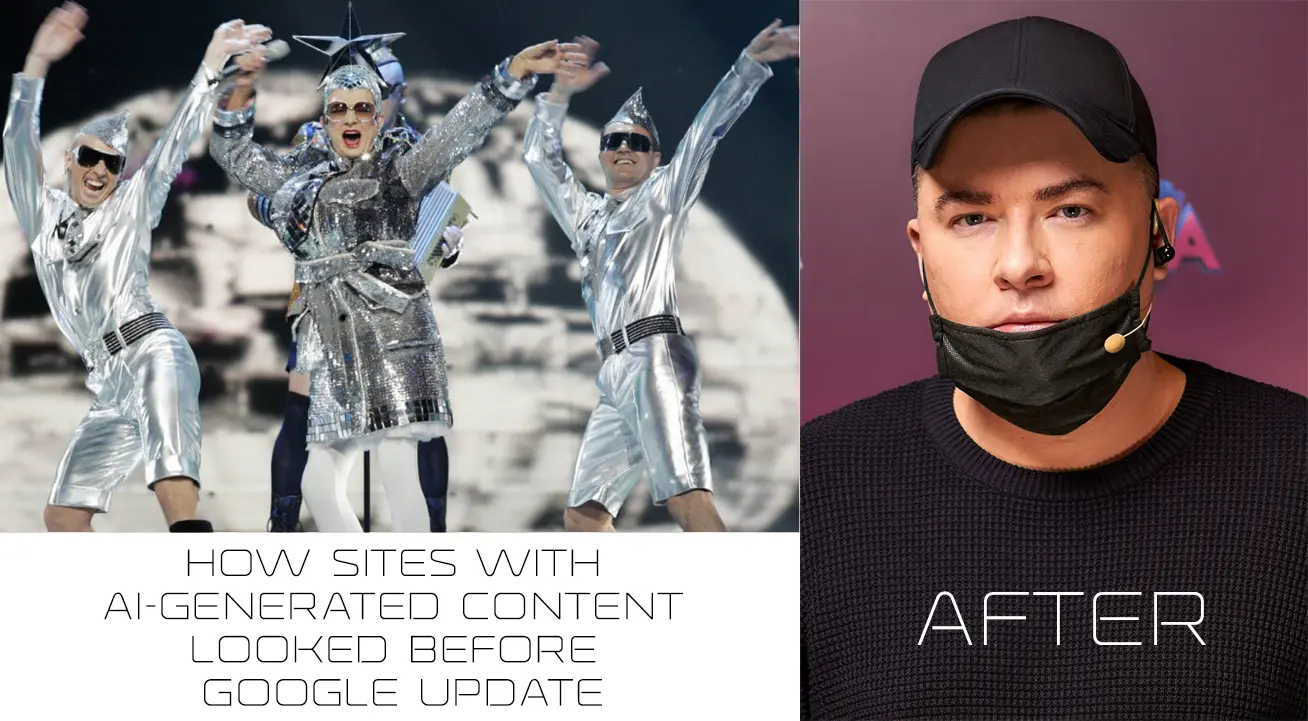
3.What was the initial marketing strategy, and did it differ from the simple desire to generate many articles and wait for one to succeed? It looks like shooting from a wooden boat at drones flying at *****, unseen by anyone. Two soldiers blindly fired over 80+ bullets, hitting the target just three times. And only one managed to bring down a drone. Moreover, their boat can sink anytime if Mr. Google decides to drill a hole in it.
If you don’t want your site to look like this boat with two soldiers but represent a ship with snipers equipped with ***** vision devices, you must spend more resources accordingly.
As I promised, we will discuss how to build such a ship at the end of this article. But for now, let’s look at the pros and cons of using AI in content development.
Benefits of AI-Generated Content
AI has gained immense popularity for a reason. It allows people to achieve things that they have long dreamed of. This statement is especially relevant for businesses. It’s no secret that their universal goal is to get maximum results in the shortest time and with minimal resource investment.
This leads to the two most tasty AI benefits, which is why millions of specialists from different fields use it. As business people like to say, “Money is time, and time is money.”
Time Savings
Artificial intelligence can quickly gather, analyze, and conveniently present data. It takes a few minutes to do what a high-quality specialist would take several days to do.
The same applies to writing content. You can create an article, case study, or step-by-step guide with a few clicks. Yes, the content will be superficial if the task description doesn’t include many details and learning resources.
If you spend more human time creating a quality prompt and editing the AI-generated result, the final content can be pretty decent.
Money Savings
Let’s take ChatGPT as an example. It has a completely free version and a paid one that costs only $10 per month. This is hundreds of times less than the average salary of experienced specialists in the content marketing field.
So, additional comments are unnecessary here.
Drawbacks of AI-Generated Content
As usual, sweet cons hide equally bitter prons. There are many more than the few ones I will present now. However, even these nuances are enough to make a person think twice before using artificial intelligence.
Formulaic Writing Style
I mean the following factors:
1.Boring tone of voice. Although AI tries to neutralize this with eloquent techniques, it doesn’t save the situation. Because it leads to the second point on this list.
2.Frequent overuse of identical words and stylistic techniques. Initially, this is not noticeable. But over time, it becomes obvious and can even irritate readers.
Only a person with the skills to find such moments and optimize the text can fix this.
Risk of Getting Banned by Google
However, text cleansed of the above nuances is still easily identified by search engine bots as AI-generated content. While they had problems with this some time ago, they are now good at it.
Finding such content, search engines can lower a site ranking in the search results. Sometimes, they can even drop it to the bottom.
How to Properly Use AI for Content Creation
I know what interests you most, and I am ready to answer right away. You need to hire a good specialist to develop quality content that doesn’t fear Google bans. The exception is if you are such a specialist 🙂
So, here are the methods that will always require a “human touch.”
Method 1: Maximally Safe
Let’s start with the most reliable approach. It includes several operations where you can safely use artificial intelligence:
1.Competitor analysis. Give the machine links to popular articles covering the topic you want to write about. AI will analyze them, and you can use this data as you see fit.
2.Structure building. After analyzing competitor articles, you can use AI to create a draft structure for your future article. But it needs manual editing to carry something unique, not a trivial copy of competitor article structure snippets.
3.Article text. Command AI to write text separately for each section. Remember to add keywords in the prompt. Then, fully rewrite the received text manually.
4.Grammar check. AI handles such monotonous tasks as text proofreading and error analysis well.
Method 2: Moderately Safe
This method includes everything described in the previous one. It only adds image generation. Since this topic is still mysterious, it is not yet clear whether search engines will react negatively to them.
There are different rumors, from complete neutrality to a ban. There is also a third scenario, which seems most likely to me. I am talking about indicating on the image that it was AI-generated.
But whatever happens in the future, one simple thing is clear. You can replace an image on the site at any time. And this can be done much faster than replacing generated text (especially if it’s a large article) with that written by a live person.
It is hardly worth worrying too much about this moment. But I recommend against overusing many such images in your articles. Ideally, develop only the cover picture this way.
Method 3: Relatively Risky
In the third method, by tradition, the operations from the previous two methods remain. Added is the combination of “human” text and 20-50% generated by AI.
I did not include this method in the safe ones because one of the articles I wrote using this scheme significantly worsened its metrics after Google’s update. Below, you can see the graph.

Method 4: Risky
And here is the method my acquaintance bragged about on LinkedIn. Of course, you can try this blind shooting. But in this case, choose a domain you don’t mind parting with.
So, the essence is simple – generate a whole article in a few clicks. That is, not section by section but the entire material at once. Insert a few keywords into the received text and publish it. Here, the emphasis is not on quality but on quantity. Therefore, you need to place as much of this content on your site as possible.
But at the same time, you will have to spend resources on link building, or this approach will not be effective unless you use this method on a highly authoritative site that already has a good backlink base. But, to put it mildly, this is a very ambiguous move. Because then everything achieved through many years of work may come to nothing.
And now, let’s move on to AI-based tools that can help you work with content.
Tools for Content Creation
There is a huge number of relevant programs for any taste and budget. Now I will review three completely different products, united only by the fact that they allow generating AI-based content. In all other aspects, they differ significantly, allowing you to choose the functionality you need.
ChatGPT
At the moment, this is definitely the most popular AI-based tool. It is very versatile and affordable. I don’t see much sense in describing it since I am sure almost all my readers are aware of its capabilities.
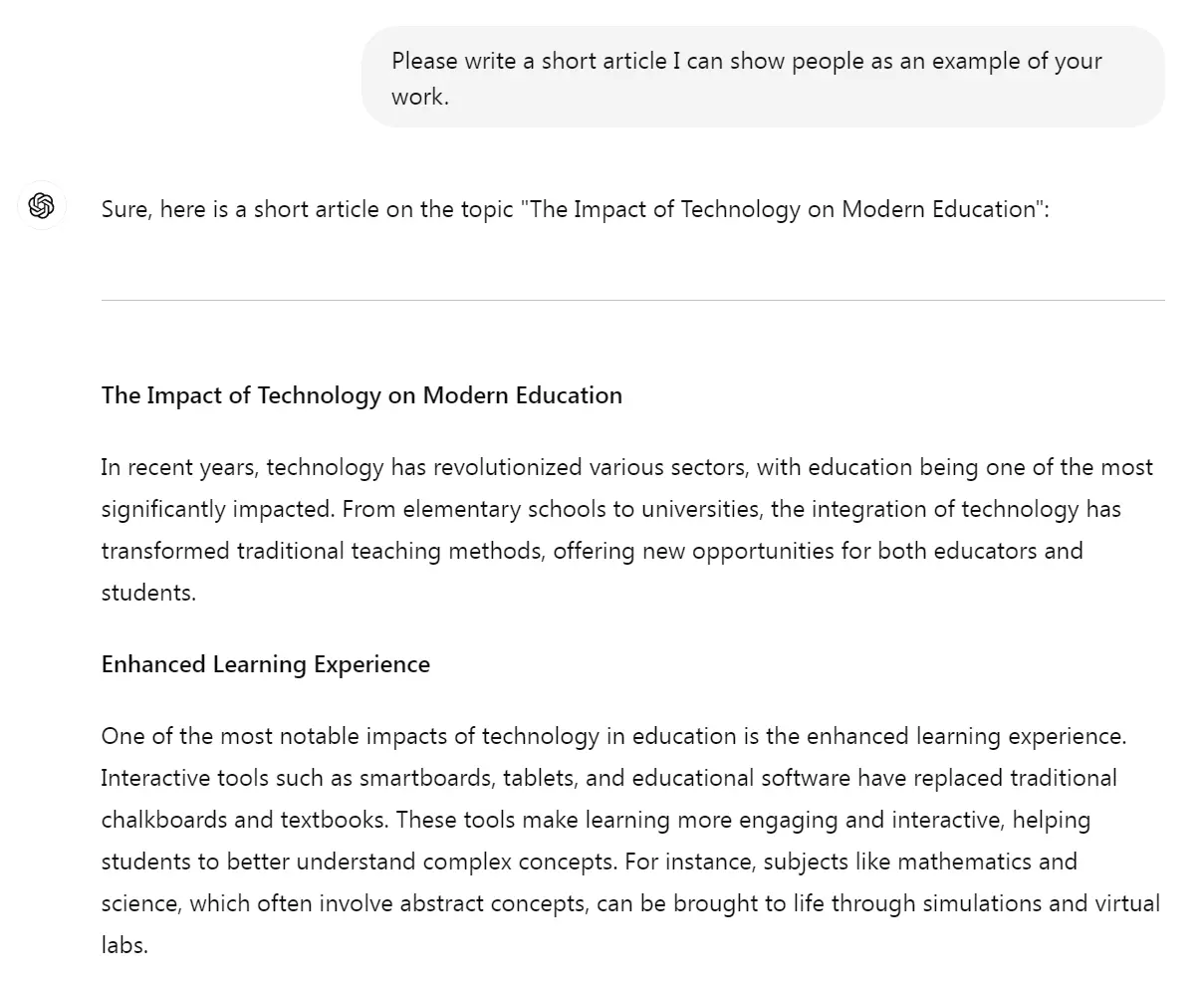
Bramework
This product is precisely to create English-language content for text blogs. It is more expensive than ChatGPT but more precisely meets the functional requirements needed in content marketing.
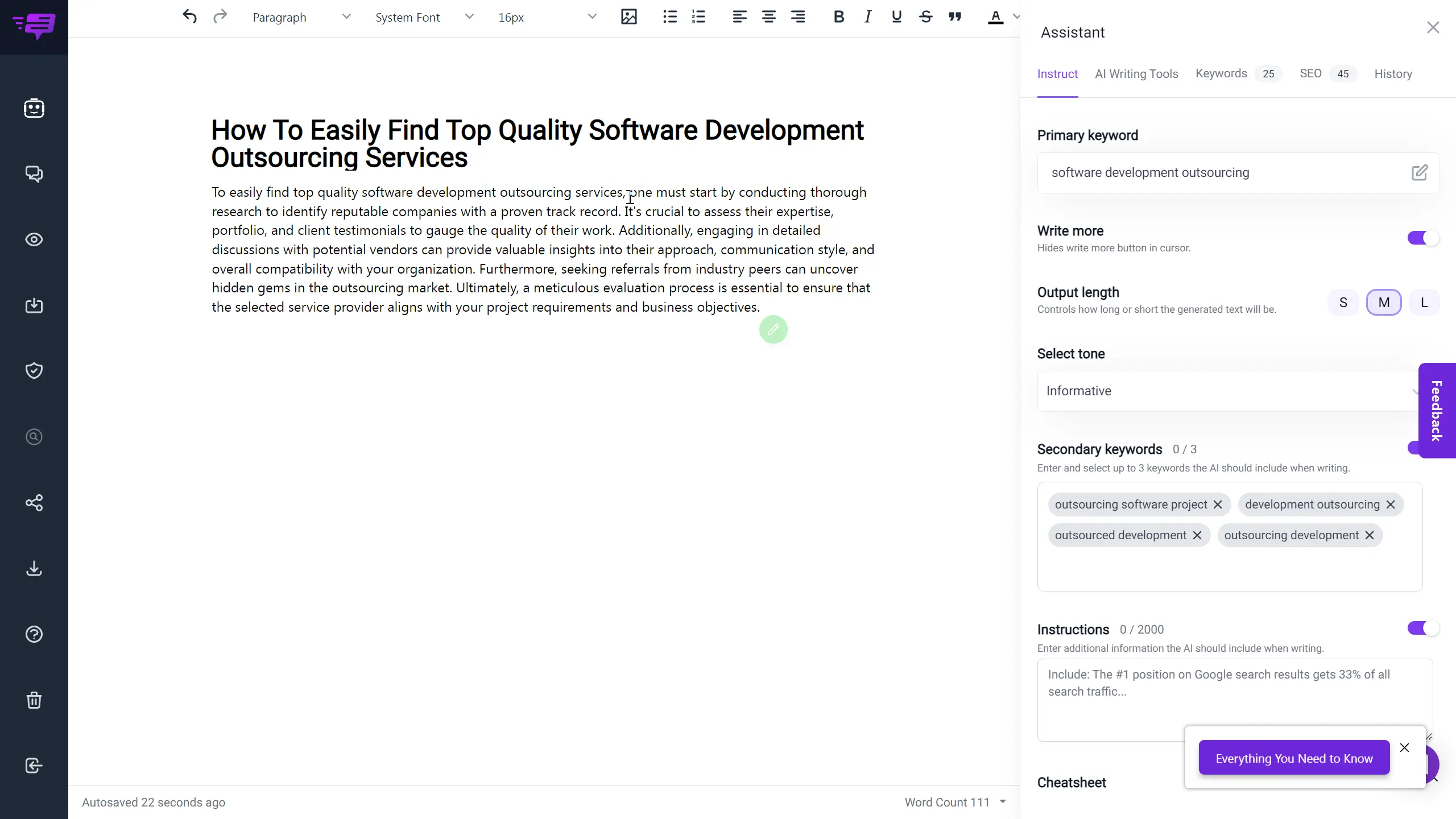
Serpstat
Serpstat is a full-fledged SEO tool offering various AI-based solutions as additional functionality. Among them are:
Serpstat also offers other interesting AI-based instruments to help users with tasks such as:
Conclusion
Artificial intelligence can either simplify or complicate your life. It all depends on how you work with it. Today, I shared an overview of tools and AI usage methods that significantly reduce the risk of your content becoming banned by search engines.
I hope my perspective resonated with you and you will gladly implement your fresh ideas after reading this material. I wish you success on this path!
